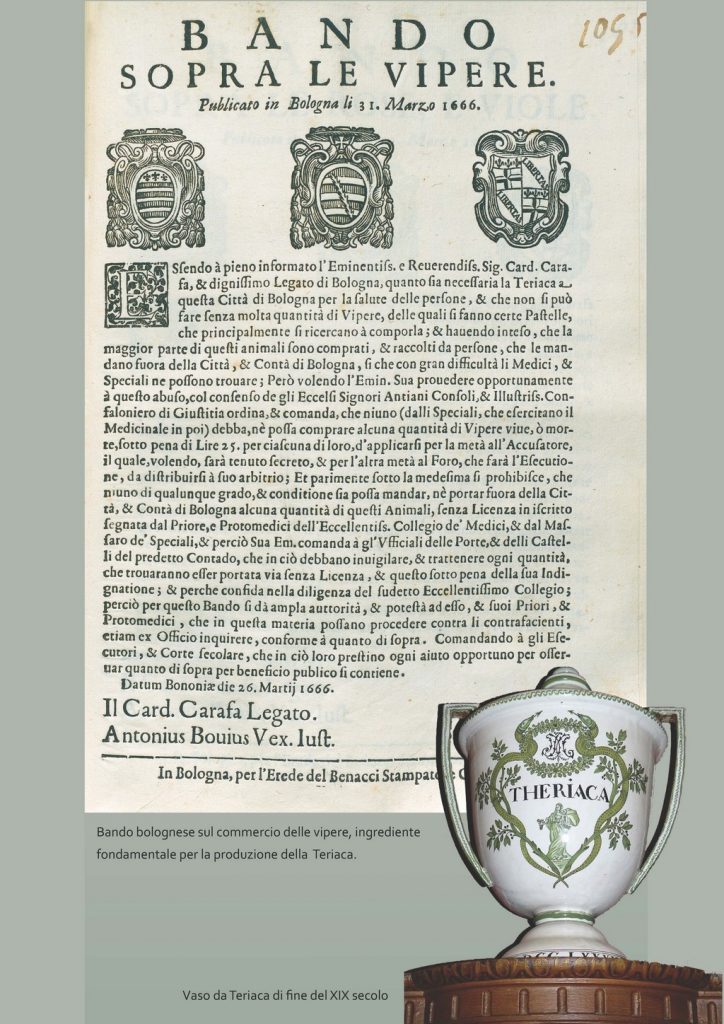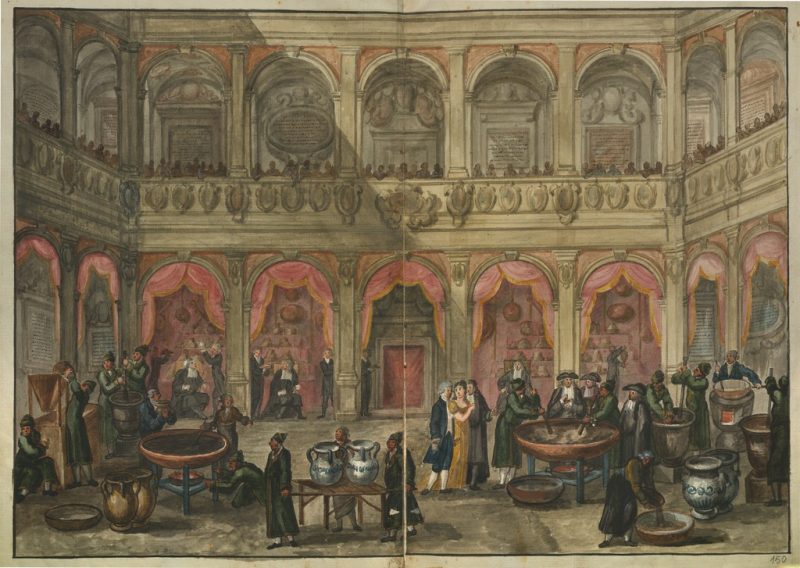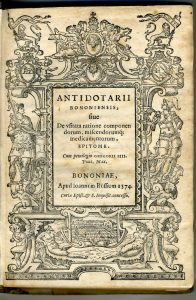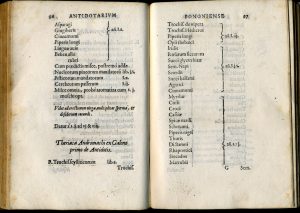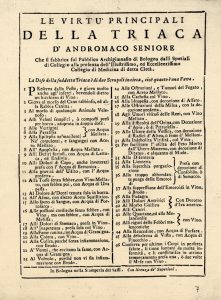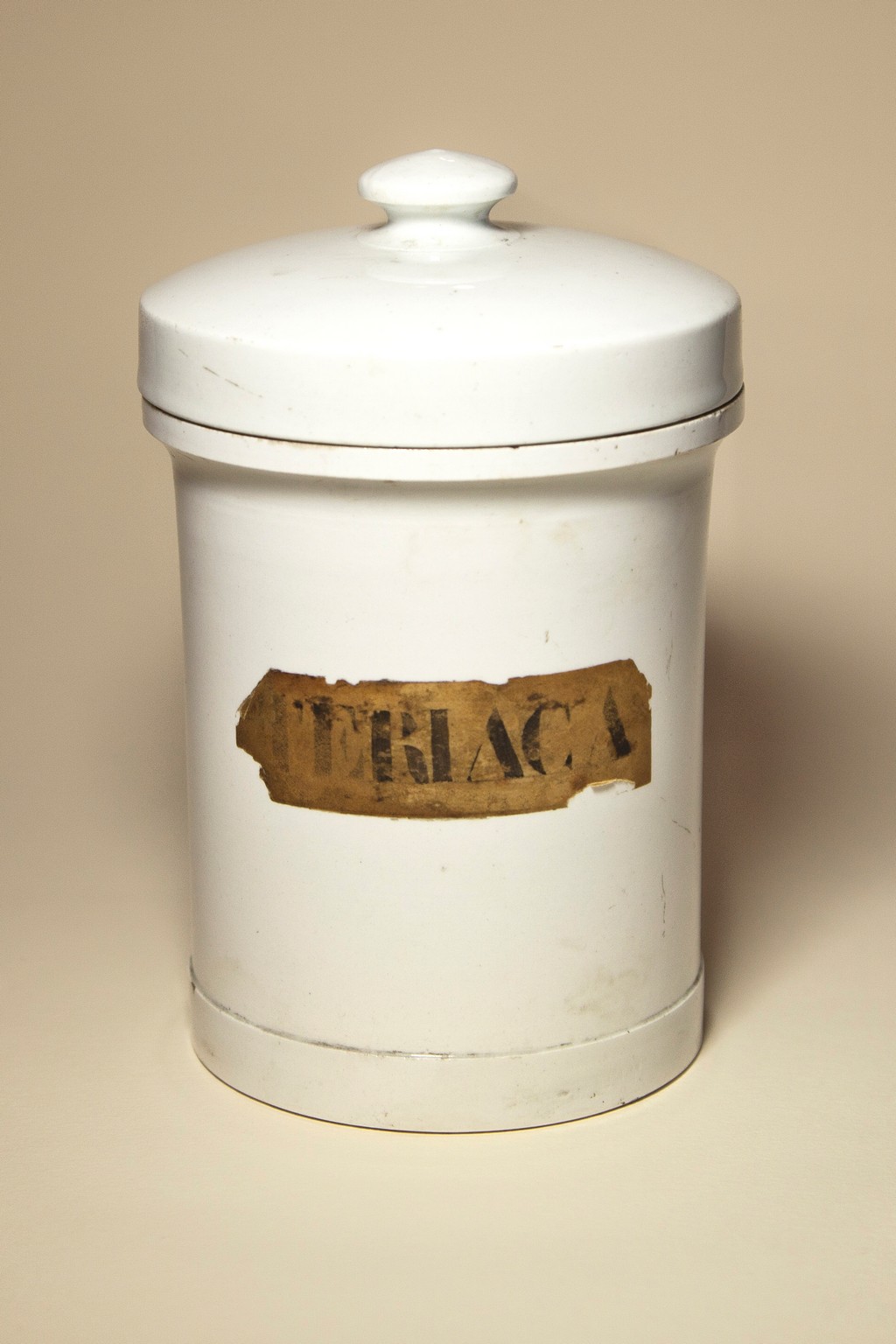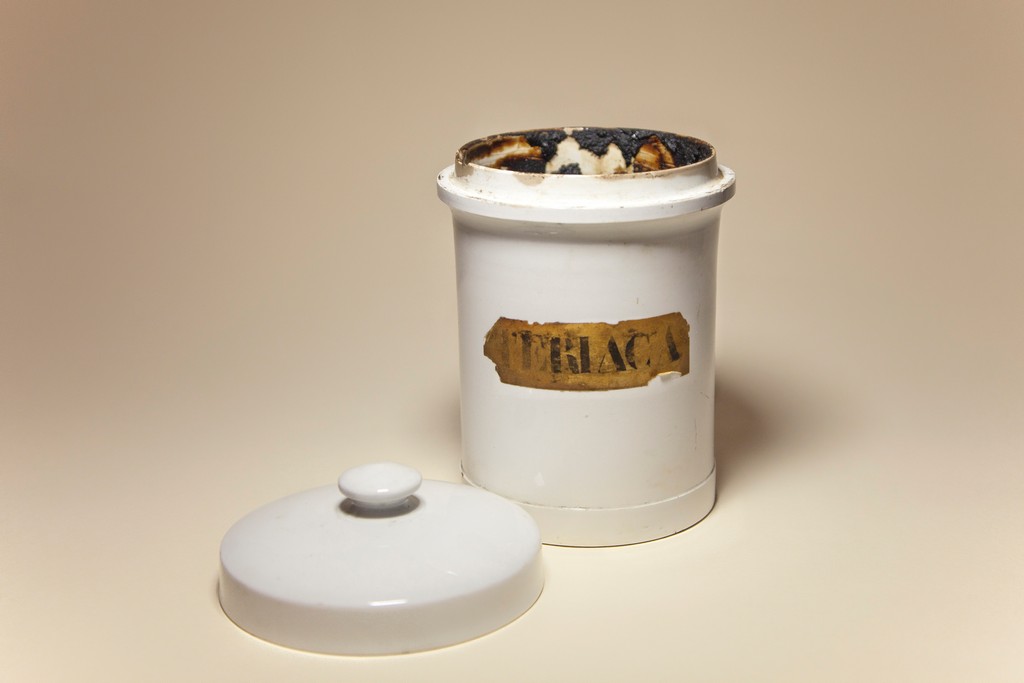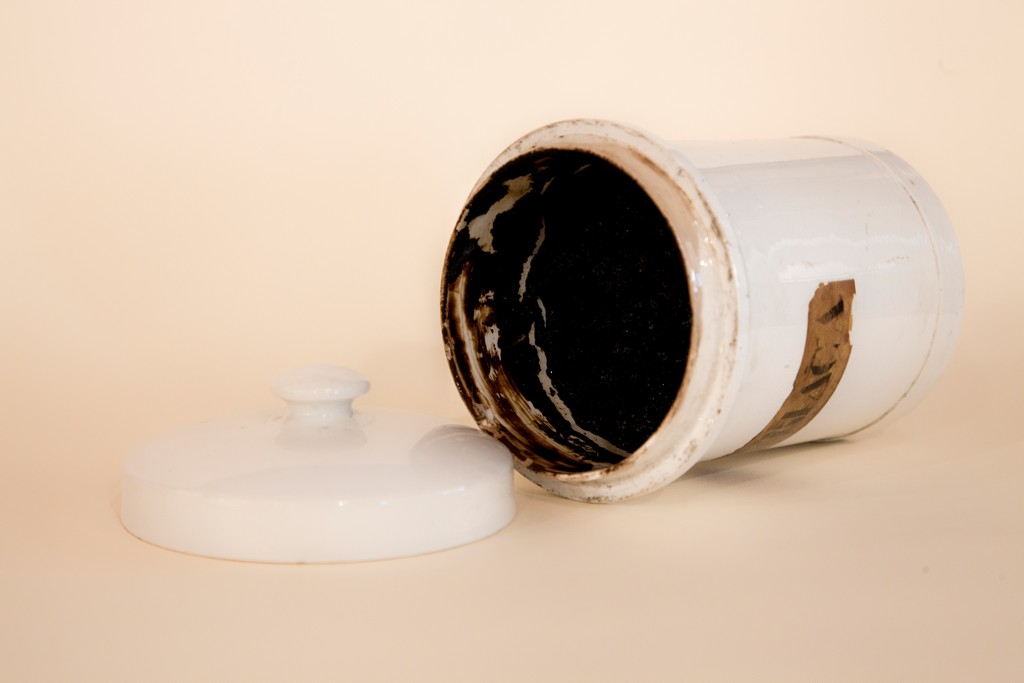The Teriaca was an antidote used since ancient times against the bite of snakes: its most famous formulation goes back to the physician Galen who lived in the 2nd century AD.
In the Middle Ages the Teriaca was considered a cure-all and its prescription became a matter of fundamental debate for doctors and apothecaries.
Preparation. The preparation of the Teriaca in the courtyard of the Archiginnasio, as it was supposed to appear at the end of the eighteenth century: the great “polenta” began in the presence of doctors, apothecaries and with great help of ladies and knights. The long procedure lasted a couple of months (It “only” took forty days when it was prepared quickly)..
At the end of the cooking, the Teriaca was left to cool and then it was distributed in small pots for each pharmacy that had booked it; it was also put in some larger vases that were kept by the Company of Apothecaries for subsequent orders.
The grocers had also the right to sell the Teriaca and the sale of the drug was absolutely liberalized at the time of epidemics..
The prescription. In Galen’s formula there are more than sixty ingredients, including viper meat, properly skinned, boiled, crushed and kneaded with breadcrumbs and including dozens of medicinal herbs, dried and cooked at different times, mixed according to rigid dosages, with the addition of cinnamon.
Every year in Bologna, in the occasion of the solemn preparation of the Teriaca in the Archiginnasio courtyard, the doctors and the apothecaries of the Studio introduced the fundamental problem of the fidelity of the prescription to the original formula.
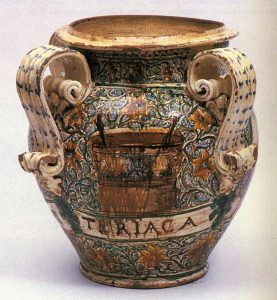
The Teriaca was in great vogue from the fifteenth to the eighteenth century and it was officially included in the Italian Antidote Books (official Pharmacopoeias). In 1823, after the Napoleonic storm and the restoration of the papal government, the Provincial Health Commission included the Teriaca in the Tariff of Medicinal Products, and it was still produced until the early years of the twentieth century.
